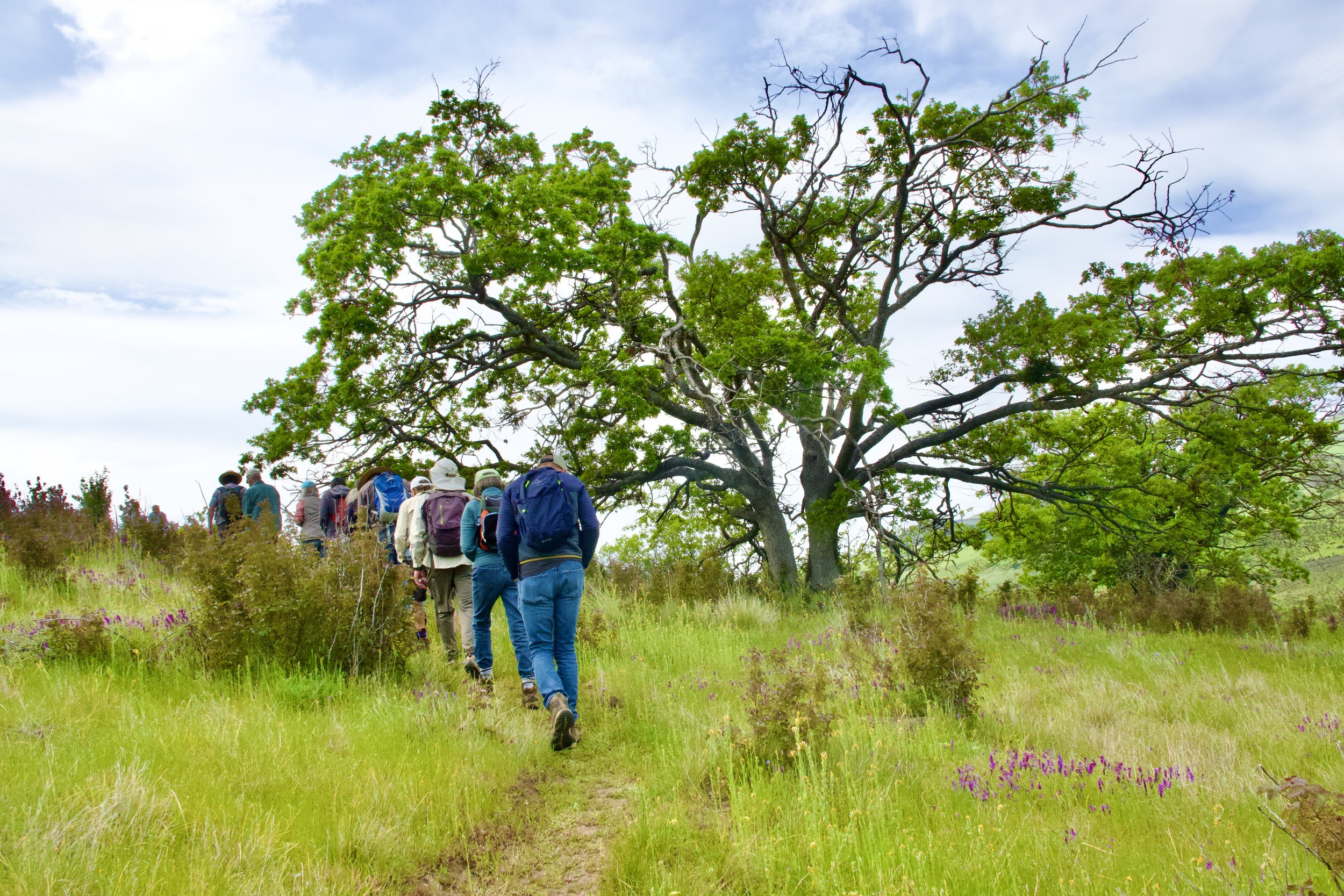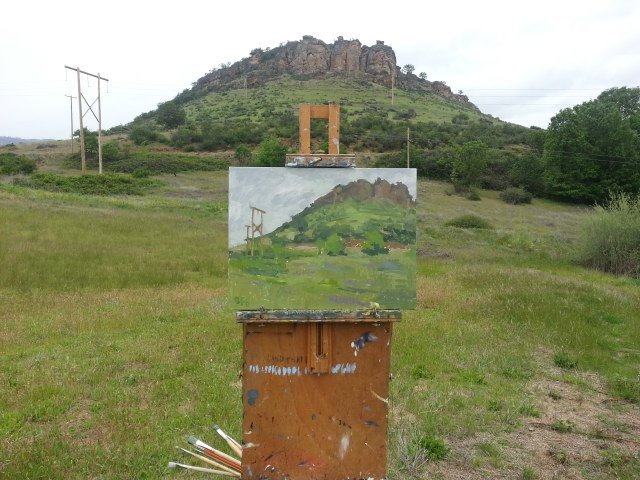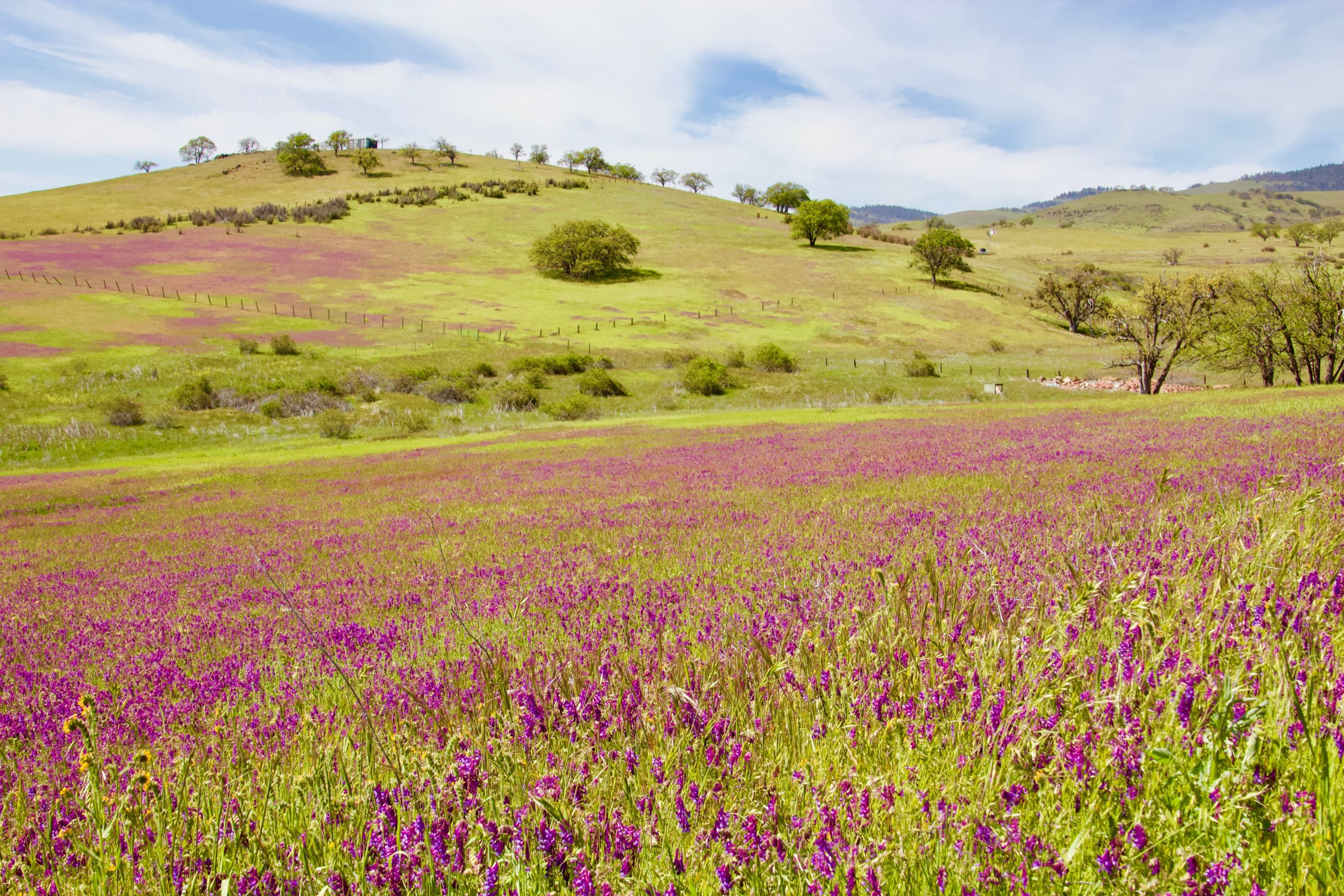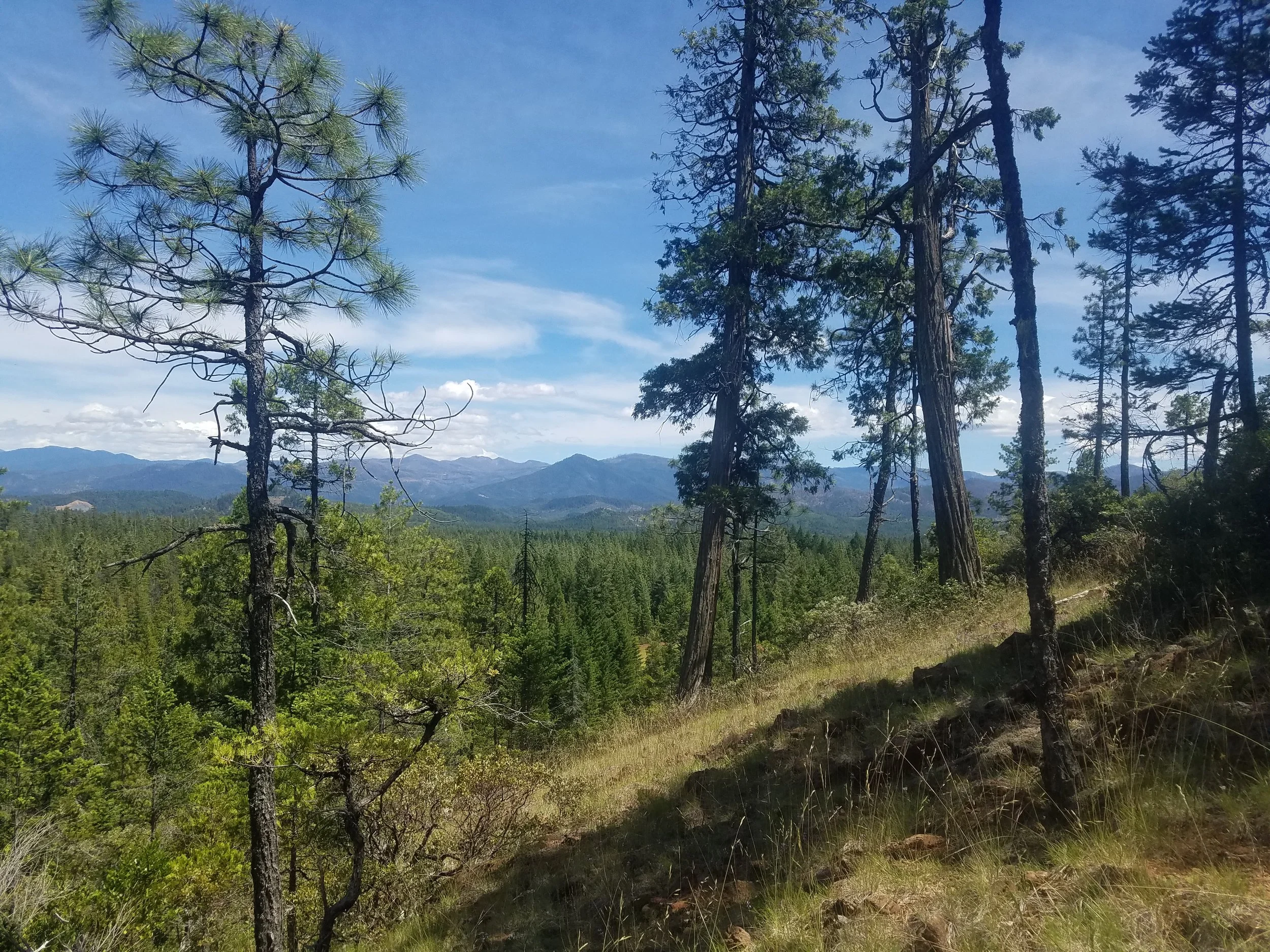“This is falling in love with the world, and this is science, and at the risk of sounding too much an idealist, I have come to believe they are the same thing.”
Part of SOLC’s 2018 Spring Hike Series, attendees look for lizards, salamanders, and frogs during a Herptile BioBlitz at Rogue River Preserve. Photo by Mokie Visser.
On a gray winter Saturday morning last year, our stewardship staff unexpectedly met on the side of a rural road near Lower Table Rock. Land steward Karen Hussey was in a car leading a crew of volunteers for the Medford Winter Raptor Run: looking for raptors (hawks, eagles, falcons, owls, osprey) on a fixed 100-mile driving route. Medford’s route is one of 312 routes in Washington, Oregon, Idaho, and California coordinated by East Cascades Audubon. Standing on the side of the road was stewardship director Kristi Mergenthaler, who along with a few volunteers, was peering through a spotting scope aimed at a farm pond full of ducks. She was leading a team for the Christmas Bird Count, documenting all bird species and numbers observed within a square mile for one designated day. The Christmas Bird Count is believed to be the longest-running citizen science project. It was initiated in 1900 on Christmas day as an alternative to shooting birds in organized “side hunts,” a contest to see who could kill the most animals.
Three 7th grade Hedrick Middle School citizen scientists grip their tally counters with eyes glued to the school’s chimney. They are poised to count the swifts entering their evening roost during fall migration as part of the citizen science program called Vaux’s Happening.
Karen and Kristi are looney for citizen science, also called community science. For instance, Karen leads a local Vaux’s Swift community project and shares data with Vaux’s Happening and she lives to take photos for iNaturalist. Meanwhile, Kristi surveys a grid on the Siskiyou Crest for the Bumble Bee Atlas and is obsessed with eBird. Community scientists document observations of the natural world and share the data with a referred database. The data is then made available to researchers.
What’s all the fuss about Community Science?
It gets you outside where you can find solace and a connection to the natural world.
Birds and critters are everywhere, but researchers are not. It expands the reach of science.
It helps make science relevant and breaks down barriers between scientists and the public.
It adds info to data holes – such as a shortage of research from private lands.
There are at least 9 million insects and other species to discover.
There are rare and possibly extinct plants and animals to rediscover.
It helps to connect science, policy, and citizenship.
It is fun and enriching!
Below are some examples of projects you can plug into. Pick your muse and start observing and reporting!
All species:
SciStarter: Search for projects in 27 categories or by region
Nature’s Notebook (USA National Phenology)
Birds:
Coastal Observation and Seabird Survey Team (COASST)
Pacific Flyway Shorebird Survey
Vaux’s Happening (Vaux’s Swifts)
Aquatic:
Sea Star Surveys (COASST)
Sea star, marine birds, and marine debris surveys (City of Cannon Beach)
Insects:
Dragonfly Pond Watch (Xerces Society)
Western Monarch Milkweed Mapper (Xerces Society)
Bumble Bee Watch (Xerces Society)
Plants:
iMapInvasives: Invasive nonnative plants & animals
